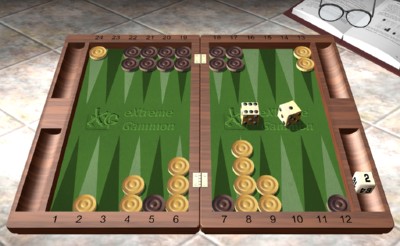Cash game, White owns the cube.

White to play 6-1.
In this position, Black has managed to build a full 6-prime, and White has one checker trapped behind it. A single checker behind a full prime is normally a pretty bad position. If Black could escape all his back checkers and arrange them on top of his prime, while White just filled in his board, Black would be about a 90-10 favorite, with gammon chances in the 5% to 6% range.
Fortunately, Black hasn’t yet escaped all his checkers, which gives White some extra resources. In fact, if he makes the right play here, his winning chances bounce up into the 25% range! That’s a hefty increase, so let’s see if we can figure out the best way to proceed.
To win, White is going to have to force Black to crack his prime. For Black to crack, two things have to happen:
(1) White needs to build some sort of prime, or at the very least a few blocking points, in front of some number of Black checkers.
(2) White has to remove as much timing as possible from Black’s position. As long as Black has some spare checkers to move in the outfield, he won’t crack his prime.
White has six candidate moves that do some combination of hitting, blocking, and buttoning up. Let’s look at them.
Play A: 8/2 13/12*. Cover the 2-point for safety and hit in the outfield.
Play B: 8/2 8/7*. Cover the 2-point and hit on the bar.
Play C: 8/2 6/5*. Cover the 2-point and hit on the 5-point.
Play D: 13/7* 6/5*. Hit on the bar and the 5-point, aiming to build a strong block quickly.
Play E: 13/7* 8/7. Make the bar-point, creating a 4-point prime.
Play F: 13/7* 13/12*. Hit twice in the outfield, forcing all of Black’s spares into White’s home board.
Of these candidates, we can quickly dispense with the three (plays A-C) that cover the 2-point. These plays are aiming for safety, but they’re not really all that safe. If we compare them to the wide-open play 13/7* 13/12*, which leaves 12 shots, Play A leaves 12 shots, Play B leaves 10 shots, and Play C leaves 15 shots. So there’s very little safety to these plays, but by not using the six to hit on the 7-point, White wastes a chance to start a real block. So we can dismiss those plays quickly.
The other three plays involve playing 13/7* and then hitting or making a block with the ace. Of these, the first one to eliminate is 13/7* 6/5*. Although it hits two men, it leaves a whopping 21 shots from the bar (all 2s and 5s, plus 1-1). The play does pretty well when Black misses everything, but gets gammoned far too much when Black hits. Even if Black enters just one checker with a number like 3-4, there’s no guarantee that White can pick up all the pieces next turn.
So we’re down to a choice between two plays – 13/7* and either 8/7, making the immediate block, or 13/12*, sending two checkers back. The clear winner here is 13/7* 13/12*, for two reasons:
(1) If White plays 13/12* and doesn’t get hit, he’s then very likely to make the bar point anyway.
(2) The Black checker on White’s 12-point represents 11 pips of timing for Black, and it’s hard to hit.
Hitting two checkers strips away all of Black’s outfield timing and leaves Black with three checkers back behind White’s block. Barring a hit on White’s 2-point next turn, Black is about to be faced with a situation where most rolls without a five or six will crack his prime. In this position, that’s a great result for White.





